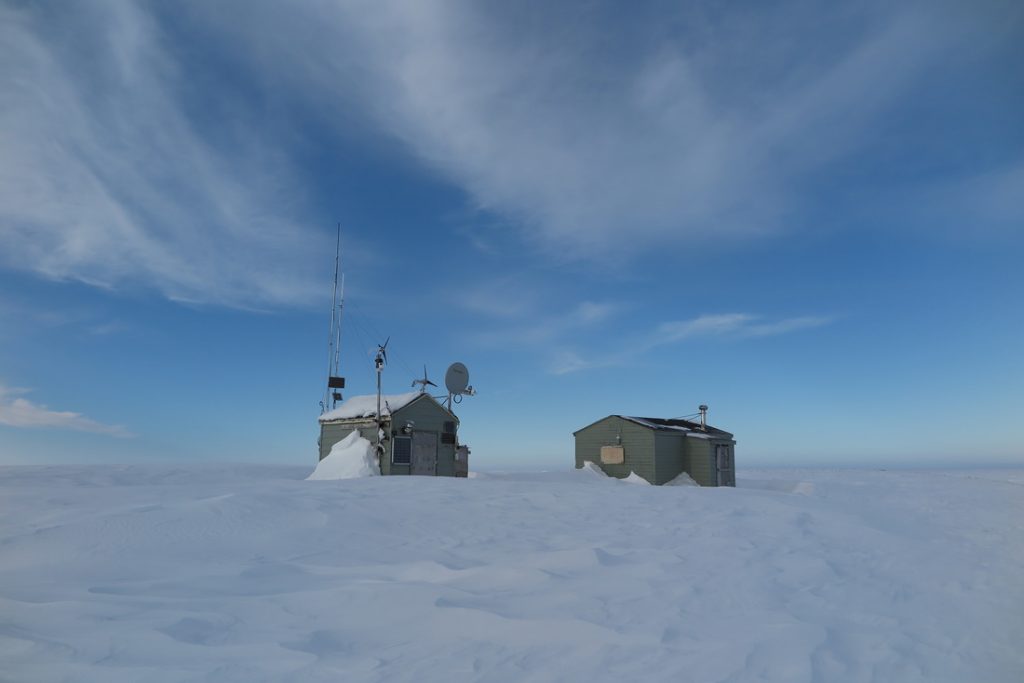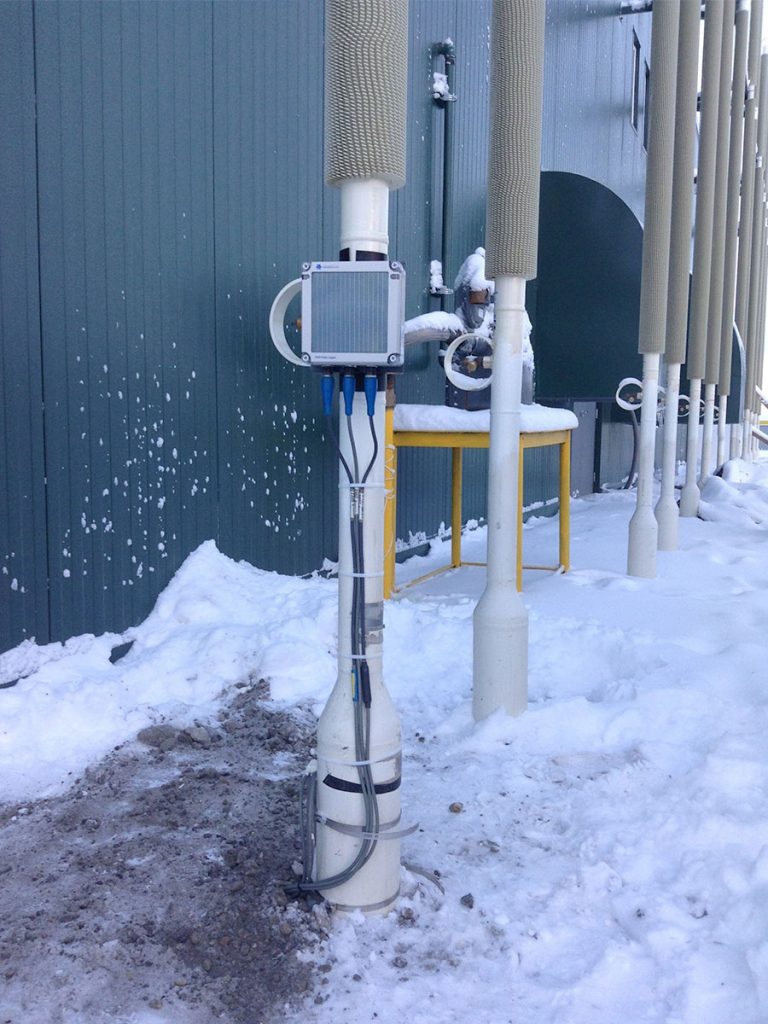Permafrost is a critical component of the Earth’s cryosphere and plays a crucial role in regulating the planet’s climate. However, permafrost is vulnerable to changes in temperature, and as global temperatures rise, it is thawing at an alarming rate. This thawing process can lead to a cascade of environmental, ecological, and infrastructure impacts1. Permafrost temperature monitoring is an essential tool for mitigating these risks by helping us understand the effects of global warming on permafrost and its associated impacts on the environment. In this blog, we will delve into the crucial role that permafrost ground temperature data plays in both scientific research and geotechnical engineering.
Understanding impacts of permafrost thaw on the climate
Monitoring the ground and active layer temperature of permafrost is essential in assessing the impact of climate change and global warming. The rise in temperatures due to human activities has triggered the thawing of the permafrost layer, which results in the release of large quantities of stored carbon dioxide and methane into the atmosphere. The presence of these powerful greenhouse gasses further accelerates the rate of global warming, contributing to more heat being trapped in the atmosphere2. By monitoring permafrost temperatures, scientists can gain a better understanding of the impact of global warming in the Arctic and globally, evaluate the environmental changes brought on by global warming, and foresee future environmental conditions.
Assessing the effects of thawing permafrost on the local ecosystem
Permafrost monitoring can also be used to help assess the impacts of climate change on local ecosystems. Permafrost layers form the foundation of many ecosystems in the Arctic, and they are home to a variety of plant and animal species. As permafrost thaws, these species are affected, and their habitats may be threatened. Additionally, changes in hydrologic systems due to permafrost loss can lead to heightened winter water flows in rivers and streams. Furthermore, the thawing of permafrost can contribute to an escalation in mercury levels in fish, posing potential health hazards for humans3.
As a case in point, the US Geological Survey (USGS) has established a long-term temperature monitoring station in the vicinity of Teshekpuk Lake, the largest body of water in the Alaskan Arctic. The goal of this initiative is to gain a more comprehensive understanding of the environmental transformations occurring in the region, such as projected sea-level rise, coastline erosion, and oil and gas development. To obtain high-resolution temperature profiling data of the permafrost active layer, a beadedstream digital temperature cable and logger have been utilized, and the resulting data has been available via beadedcloud since 2015. This data has been immensely helpful for researchers in tracking the seasonal fluctuations in the active layer temperature near the lake.

Developing strategies to protect infrastructure in permafrost environments
Recent studies have shown that permafrost thaw can have a significant impact on infrastructure, particularly in the Arctic region. This is because permafrost thaw can cause the ground to become unstable, leading to ground subsidence, sinkholes, and displacement of roads, pipelines, and structures. These risks can make it challenging and expensive to construct and maintain infrastructure in the region, as well as pose a threat to human safety. Hence, monitoring the permafrost and anticipating ground changes is vital to mitigate the effects of permafrost thaw4. Parameters like temperature, moisture content, subsurface ice content, and surface elevation of the ground are essential to measure. By monitoring these parameters, engineers can better understand the ground’s stability and plan for potential changes in the future.
Monitoring permafrost temperature can also help identify vulnerable areas that require attention, resources for infrastructure maintenance and repair and mitigative strategies used to protect infrastructure. For instance, beadedstream’s digital thermistor strings and direct-to-orbit data loggers were used to monitor the thermosyphons installed in the new terminal and services building at the Iqaluit International Airport. This monitoring system assessed the performance of the thermosyphons underneath the buildings, which were designed to keep the foundations frozen and reduce the risk of differential settlement, which could cause costly damage. Stakeholders could easily access the data collected via a web browser through the beadedcloud application, enabling them to view the latest information quickly and easily, regardless of their location.

In a nutshell
In conclusion, permafrost temperature monitoring helps in understanding the impact of global warming on the environment and developing mitigation strategies to minimize the risks associated with permafrost thaw. It can help identify vulnerable areas and provide valuable information for infrastructure planning and maintenance. It can also help scientists evaluate environmental changes and assess the impact of climate change on local ecosystems. With the ongoing rise in global temperatures, monitoring permafrost is becoming increasingly crucial in safeguarding our environment, communities, and infrastructure. The utilization of advanced monitoring technologies such as digital thermistor sensors and real-time temperature monitoring dashboards enables effective collaboration between different stakeholders in addressing the challenges posed by climate change.
beadedstream stands out in the field of permafrost temperature monitoring due to its expertise in designing digital temperature cables and data loggers that can withstand the harsh conditions of remote locations. The company’s data dashboard, beadedcloud, offers real-time temperature data that can be accessed from anywhere in the world, thus reducing the costs and risks associated with traveling to the site just to collect data. With a long-standing experience in permafrost regions, beadedstream has been collaborating with scientists, researchers, engineering contractors, and governments within Alaska, Canada and beyond by supplying its digital temperature monitoring solutions. The company’s products can be customized to meet the unique needs of each project, ensuring that users receive accurate and reliable temperature data to aid their research and decision-making processes. If you have any questions about their products or services, feel free to email contact@beadedstream.com.
References:
1National Geographic. (n.d.). Retrieved from: https://education.nationalgeographic.org/resource/permafrost/
2Massachusetts Institute of Technology. (2022, August 4). MIT Climate Portal. Permafrost. Retrieved from: https://climate.mit.edu/explainers/permafrost
3Chagas, C. (2023, March 15). Queen’s Engineering FACULTY OF Engineering and Applied Science. Élise Devoie investigates permafrost loss and its impact on ecosystems and Indigenous communities. Retrieved from: https://engineering.queensu.ca/news/2023/03/%C3%89lise-Devoie-investigates-permafrost-loss-and-its-impact-on-ecosystems-and-Indigenous-communities.html
4Streletskiy, D., et.al. (2023, January 4). IOP Science. The costs of Arctic infrastructure damages due to permafrost degradation. Retrieved from: https://iopscience.iop.org/article/10.1088/1748-9326/acab18/meta








